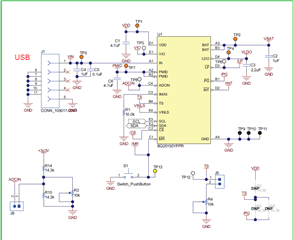Other Parts Discussed in Thread: EV2400, , BQ25150
We have started considering evaluation boards.
It seems like the assumption is that VDD output = VIO input is used as the default.
Personally, I tried connecting it to use VLDO output as VIO input.
I am experiencing a problem. Could you please tell me how to resolve it?
Thank you for your support.
VDD output = VIO input
5V input from USB connector to BQ25155EVM board
VDD output = VIO input VIO is 1.8V.
Connect EV2400. VIO is 1.8V.
VLDO output = VIO input
5V input from USB connector to BQ25155EVM board
VLDO output = VIO input VIO is 1.8V.
Connect EV2400. VIO is 3V.
↑Why is this?







